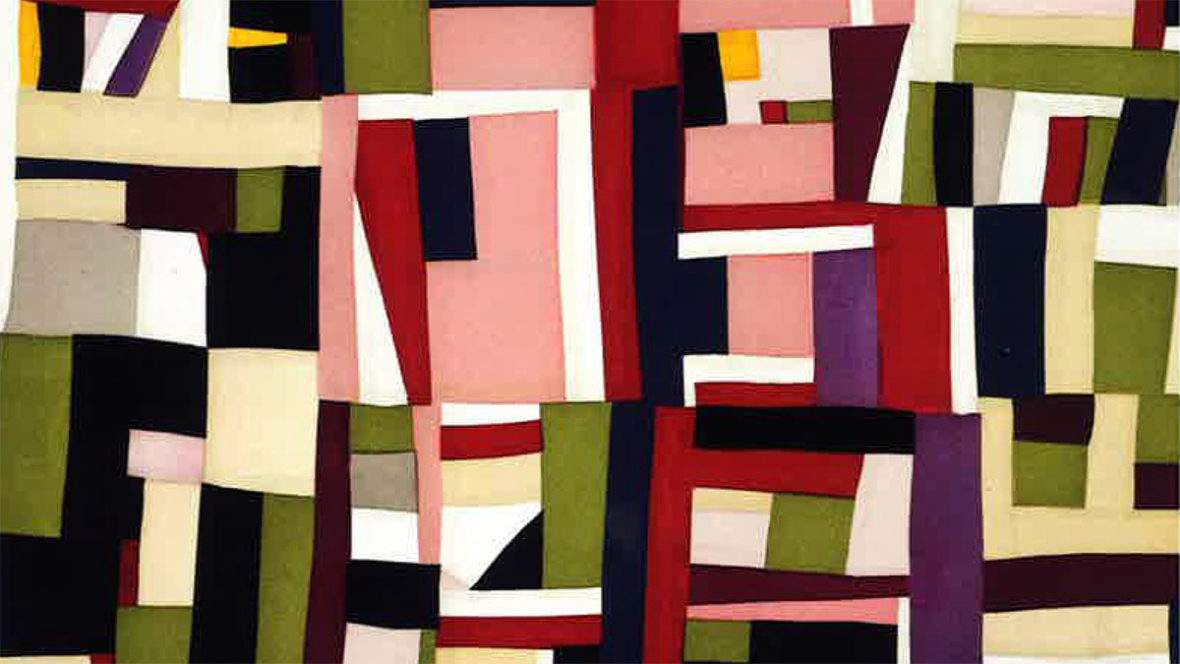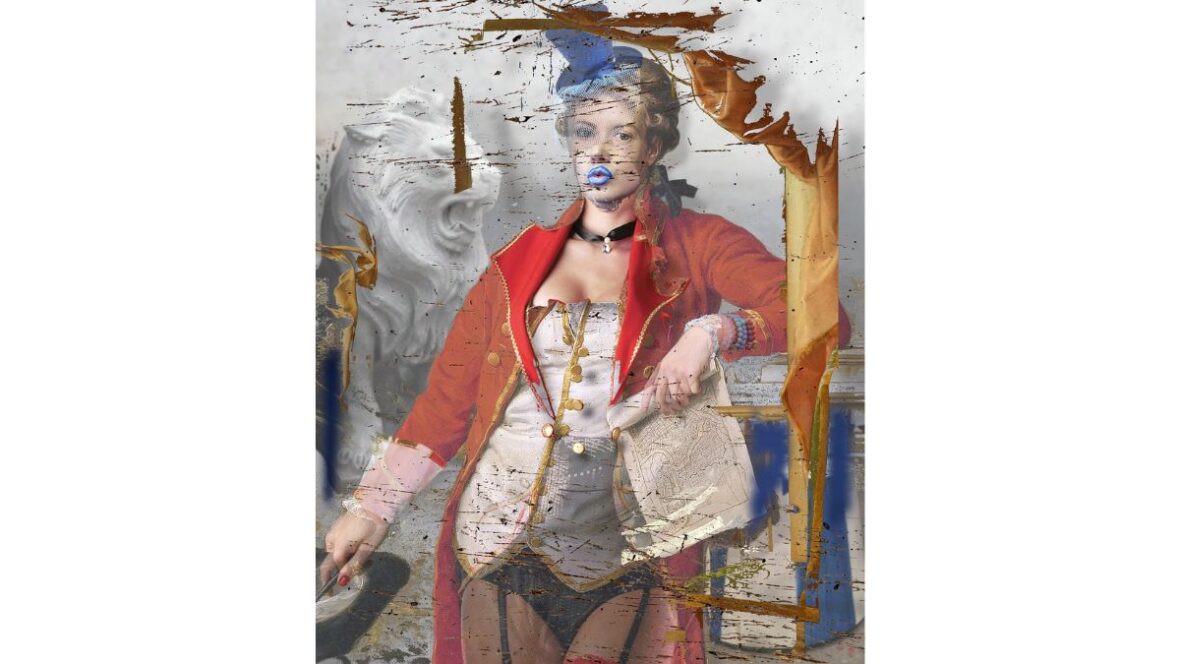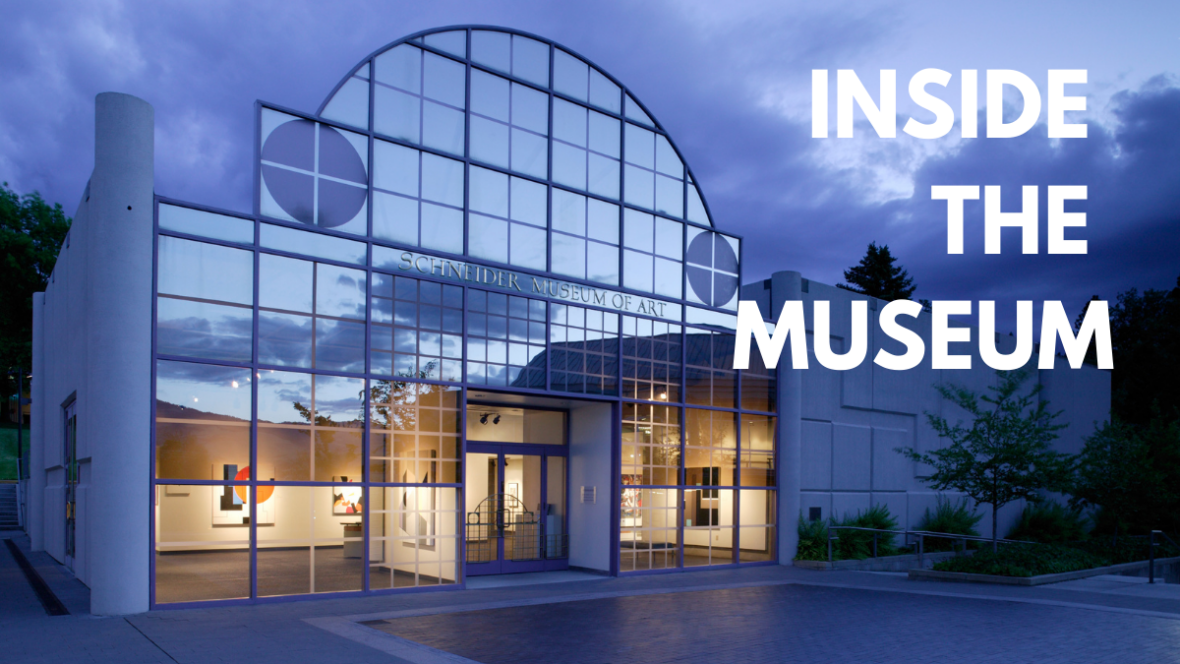Visual Jazz:
Quilts and Works
on Paper by
Women from Gee’s Bend
& Textile Assemblages by Kristin Hoppe
Curatorial Essay
Caucasian American patchwork quilts were made of leftover scraps or previously worn garments, cut into small, geometric shapes, pieced and assembled into patterns. Geometry provided a logical system of fitting and joining the disparate materials, easiest done when measurements were even. Their arrangements within the overall symmetrical pattern demonstrated a love of order and formal organization. Some patterns were more popular than others and their repeated use turned into tradition, faithfully followed generation after generation. Editing and refining of such traditional patterns also occurred with the passage of time.
The importance of flawless needlework was greatly stressed as simple stitches turned into elaborate designs on quilt surfaces enhancing flat single-color areas with opulent embellishments. To attain such needlework perfection, stitches had to be evenly matched forming linear marks that undulated into complex scrollwork the way single line drawings could intertwine to morph into languorous shadows of jungle vegetation.
All these rules and strictures added up to exquisite craftsmanship yet discouraged inventiveness and precluded deviation from time-tested, previously established arrangements. Great pride was taken in the ability to replicate traditional designs, maintain exact measurements, striving for geometric perfection, all of which demanded discipline and an unquestioning willingness to follow directions.
~ ~ ~ ~ ~
Seen in the exhibition titled Visual Jazz were works by Afro American quilt-makers whose intentions and goals are at the opposite end of those made by Caucasian quilters yet achieve an equally powerful aesthetic statement.
An authority on the subject, Eli Leon, historian, collector and a specialist in African American quilts, attributes their special characteristic to attitudes honoring only intuitive feelings as the primary guiding force of each artist’s sensibility, whose joy lies primarily in spontaneity and improvisation. Suffused by an easy-going, relaxed approach and possessed of casual mastery, it rejects rules and symmetry of any kind, avoiding any kind of control. These women value flexibility, embrace change in midstream and cherish the freedom to explore, to take advantage of accidents and reject any and all preconceived notions. The idea is to stay open and listen only to one’s own inner voice.
Eli Leon finds provocative parallels between North American black women’s piecing, blocking and framing in their striking freehand way, to the designs and patterns of raffia velour or velvets of the Kuba of Central Zaire.
It seems to me that the quilters from Gee’s Bend have a great deal more in common with contemporary abstract painters than they do with many of the traditional American patchwork quilt-makers. Their works on paper clearly demonstrate that what they care most about, are the placement of shapes and colors especially when the need for functional purposes such as keeping warm no longer exists.
This in contrast to American patchwork quilters whose pride and joy remains focused on the decorative beauty of their quilts, on the perfection of their needlework and on the craftsmanship needed to continue upholding the traditions and designs of American Patchwork quilts.
– Josine Ianco Starrels, Curator
Schneider Museum of Art
Artist Statement for Kristin Hoppe
I was fortunate to be born to a family that loved the arts. Even though we were of modest means, as far back as I can remember my parents made available to me many supplies used to express oneself – paper, paint, pastels, crayons, scissors, and a small kiln. For several years we made Saturday trips to the Detroit Institute of Arts for painting and drawing classes. There was that magical Christmas when the large box with my name held a sewing machine. My fifth grade art teacher, after watching me throw a shuttle back and forth on a small table loom, mentioned to my parents that I was an extremely talented weaver! That was the excuse they needed to purchase a 40 inch, 4 harness floor loom which filled up half of our fairly small living room. In the ensuing years, their time spent enjoying the loom far exceeded mine.
Years later, I was pursuing an MA degree in fine arts at Eastern Michigan University. My mother died and that loom ended up in my even smaller living room, just as I needed to choose a focus area for my degree. It was too obvious a message to ignore. My love for working with fibers and fabrics started at an early age and continues to this day. Color and pattern are my passion. I love color, all colors, and use them intuitively. I relate to artist Sonia Delaunay’s art and her words, “color no longer enriches the image – it creates the image.” I very rarely use a traditional pattern to create my work but prefer to work spontaneously, creating the patterns as the piece grows. My husband and I spent four years living in West Africa. People keep asking if that experience influenced my work. I knew it must have but could not identify exactly how. Now I can see that much of my work involves strips, which is very typical of the weaving of West Africans. Also, my free use of colors which are not usually combined surely was inspired by the riot of colors seen in West African women’s clothing.
I hope the sense of joy and excitement I feel when I work in my studio is shared by the people who view my work.
Curator
Josine Ianco Starrels
Artists for Visual Jazz
Mary Lee Bendolph
Louisiana Bendolph
Loretta Bennett
Rachel Carey George
Revil Mosely
Lola Pettway
Nancy Pettway
Quinnie Pettway
Stella Mae Pettway
Nettie Young
Artist for Textile Assemblages
Kristin Hoppe



